Cats can make for a purrfect companion for individuals looking for a housemate or a family wanting to expand. However, some cats live a lot longer or shorter than others, and you should take this into account when choosing the right cat for you and your needs. It is important to note that any cat can live for a long time, and their diets and lifestyle play a huge role in determining their lifespan.
Here are 20 cats with the shortest expected lifespans.
1. Exotic Shorthair — 8 to 11 years
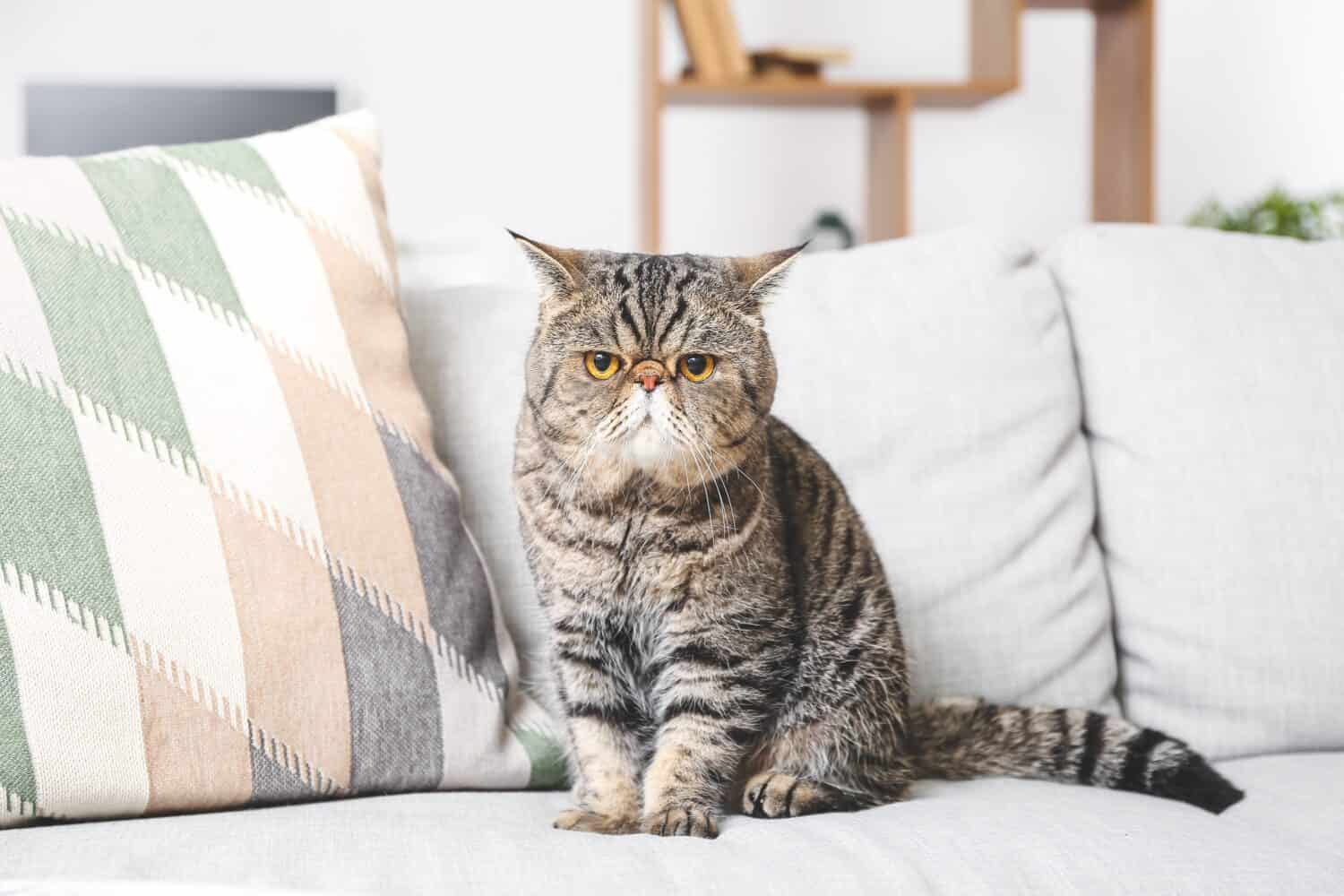
The squished faces of exotic shorthairs make these cats prone to breathing problems.
©Pixel-Shot/Shutterstock.com
Exotic shorthairs were bred as a short-haired alternative to Persians. They have a round, flat face with large eyes and small ears, and they have a cobby, low-to-the-ground body and a short, dense coat. These cats can come in a variety of colors, such as tabby, tortoiseshell, point, or solid. Their tail is short and thick and they have large round paws.
These cats are prone to several health issues, which can limit their lifespan to between 8 and 11 years. Because of their brachycephalic faces, they are subject to breathing problems and can cause snoring or wheezing. Their short jaws can lead to overcrowding of teeth, which can cause dental issues.
2. Burmilla — 7 to 12 years
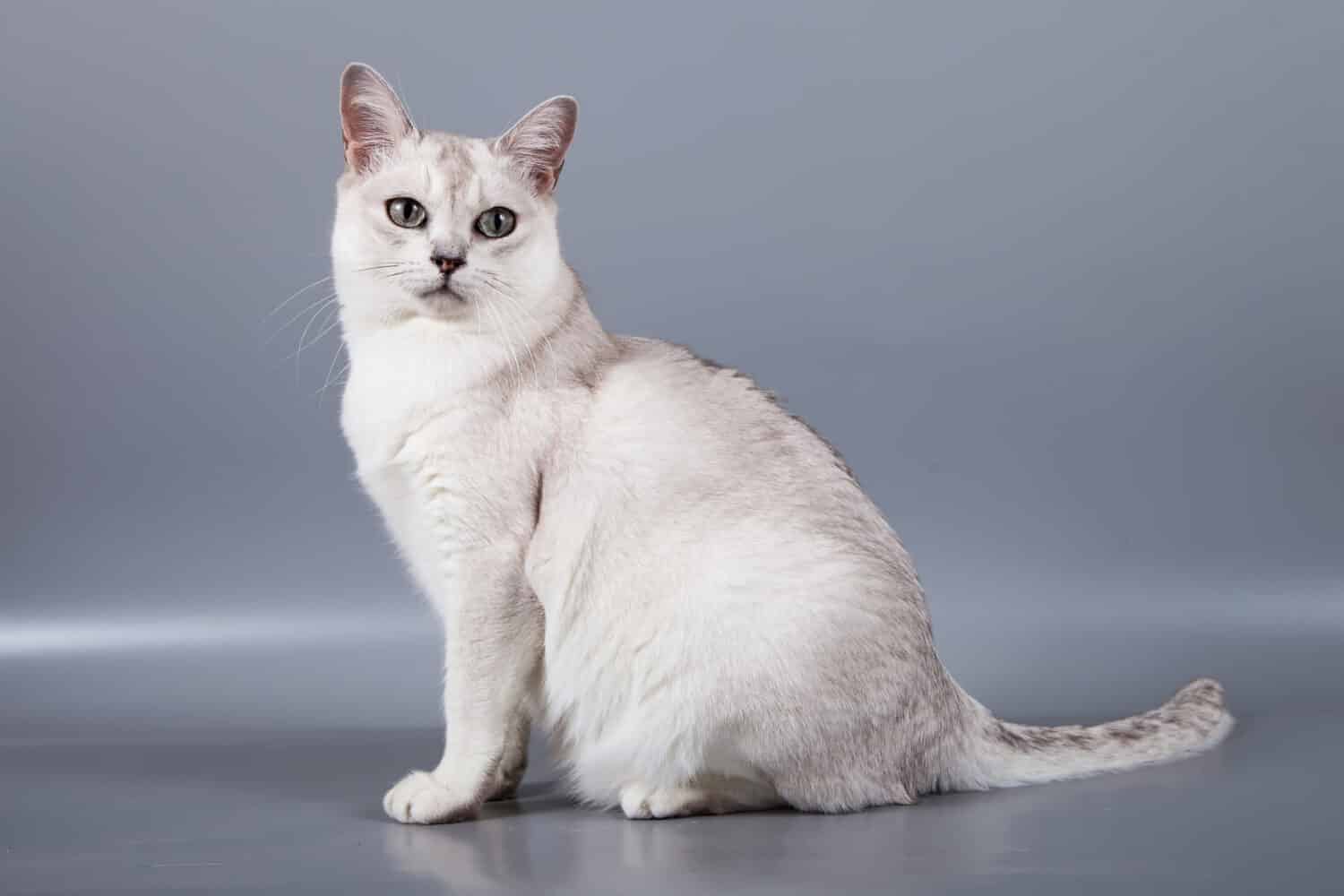
A
Chinchilla
Persian and Burmese mix, the Burmilla can come in many different colors.
©JE Jevgenija/Shutterstock.com
The Burmilla is a breed that originated by crossing a Chinchilla Persian with a Burmese. These beautiful cats are medium-sized and have muscular, elegant bodies. The distinguishing feature of this breed is its amazing sparkly silver coat and the “make-up” that lines the nose, lips, and eyes. They have round faces and rounded ears. The Burmilla can either be semi-longhair or shorthair. The coat color can vary, including black, blue, brown, chocolate, and lilac.
Burmilla cats are fairly healthy but can have health issues such as allergies and kidney problems such as polycystic kidney disease. The lifespan of the Burmilla cat breed is 7-12 years.
3. Maine Coon — 9 to 13 years
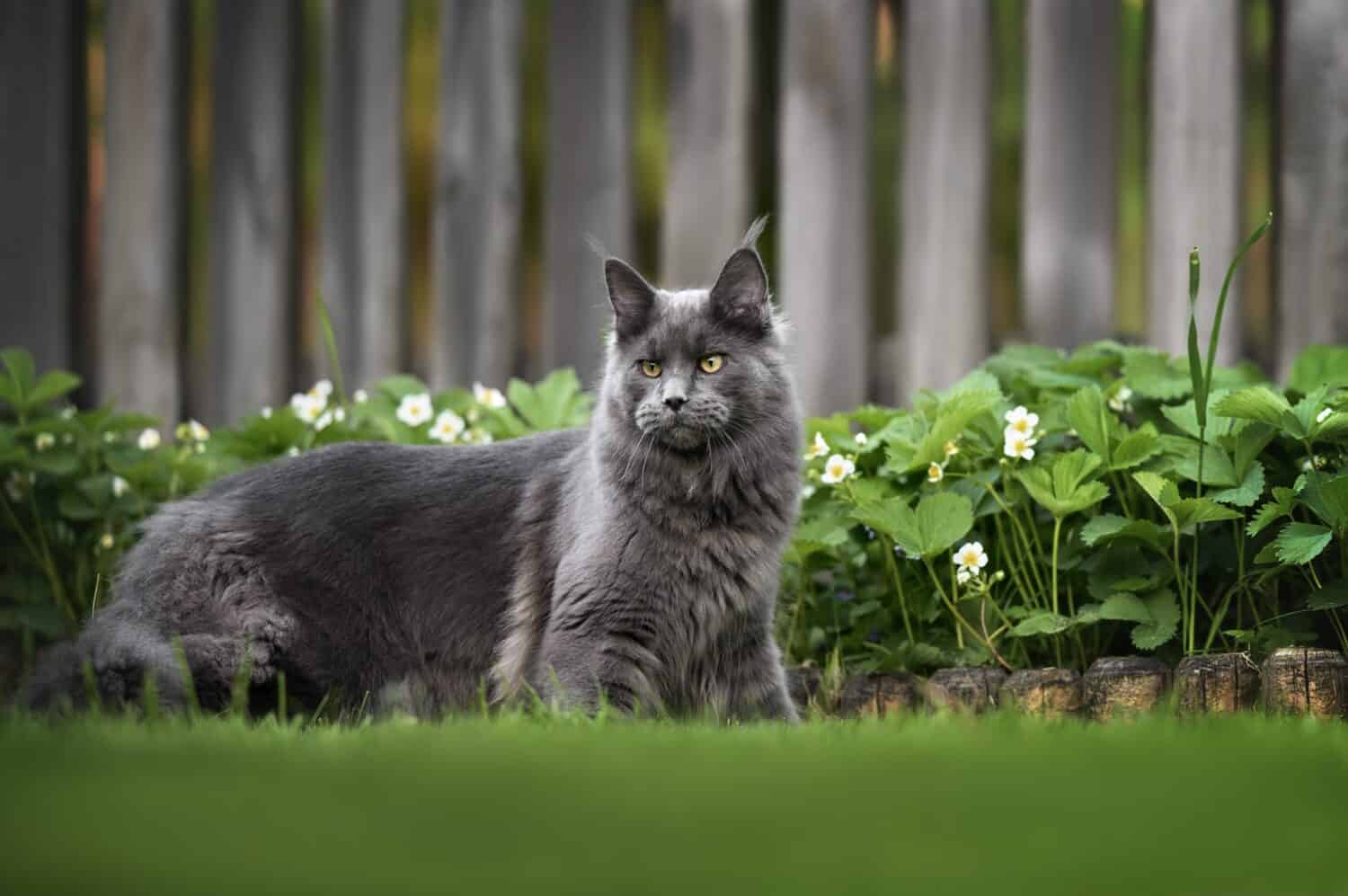
A giant cat breed, Main Coons can weigh up to 25 pounds.
©otsphoto/Shutterstock.com
The Maine Coon is a giant breed of domesticated cat. Its large size makes it a very popular pet! The Maine Coon can weigh around 10 to 25 pounds. Maine Coons are fluffy cats and have high grooming needs. This breed has a prominent ruff of its chest, a strong jawline, a rectangular body shape, and a long, bushy tail. Some of these cats even have extra toes resulting in polydactylism. The cat’s coat is long or medium and is soft and silky.
This cat’s lifespan is 9 to 13 years, with 12.5 years being the average. The Maine Coon is predisposed to certain health issues, which include hip dysplasia, hypertrophic cardiomyopathy, obesity, spinal muscular atrophy, stomatitis, periodontal disease, and polycystic kidney disease.
4. Scottish Fold — 12 to 14 years

Due to their folded ears, Scottish folds are prone to a disease called osteochondrodysplasia.
©Alexander Sobol/Shutterstock.com
Scottish folds are known for their distinguished folded-over ears, hence their name. They are medium-sized cats with short, dense coats that come in a variety of colors, such as white, black, red, cream, and blue. They have large round eyes and short noses. Scottish folds are calm, friendly, and sociable animals, forming strong bonds with their human companions.
The selective breeding for the folded ears has resulted in many health problems. Scottish folds suffer from a disease called osteochondrodysplasia. This affects the cartilage and bone throughout their bodies, often leading to arthritis and reduced range of motion. This can be very painful for the cat, and as a result, many countries around the world have banned breeding or selling this breed. These cats typically have a lifespan of around 12 to 14 years.
5. Himalayan — 9 to 15 years
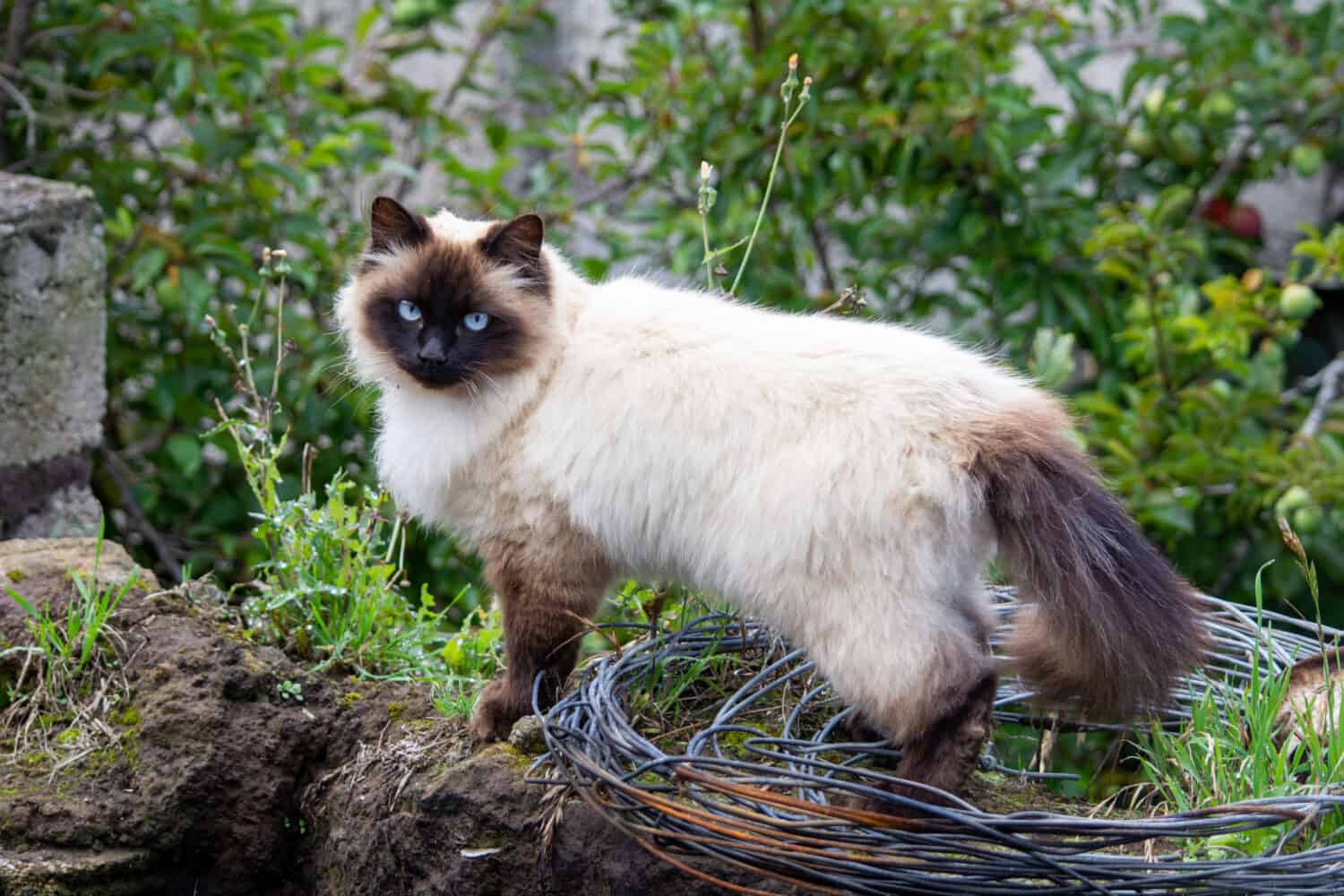
A brachycephalic breed, Himalayans may have issues with breeding.
©ecuadorplanet/Shutterstock.com
The Himalayan is also known as Himalayan Persian and Colourpoint Persian. This breed was developed by crossing a Persian with a Siamese feline. Although the Himalayan is a medium-sized cat, it looks large because of its fur. The Himalayan has a round body and short legs. Like other Persian breeds, this cat is flat-faced or brachycephalic. The Himalayan is different from the Persian as it has point coloration and blue eyes.
Because the Himalayan is a brachycephalic breed, health issues can include difficulties with breeding, dental malocclusions, and eye conditions. Other health issues the Himalayan may experience include polycystic kidney disease and feline hyperesthesia syndrome. The lifespan of this cat breed is 9-15 years.
6. Sphynx — 9 to 15 years
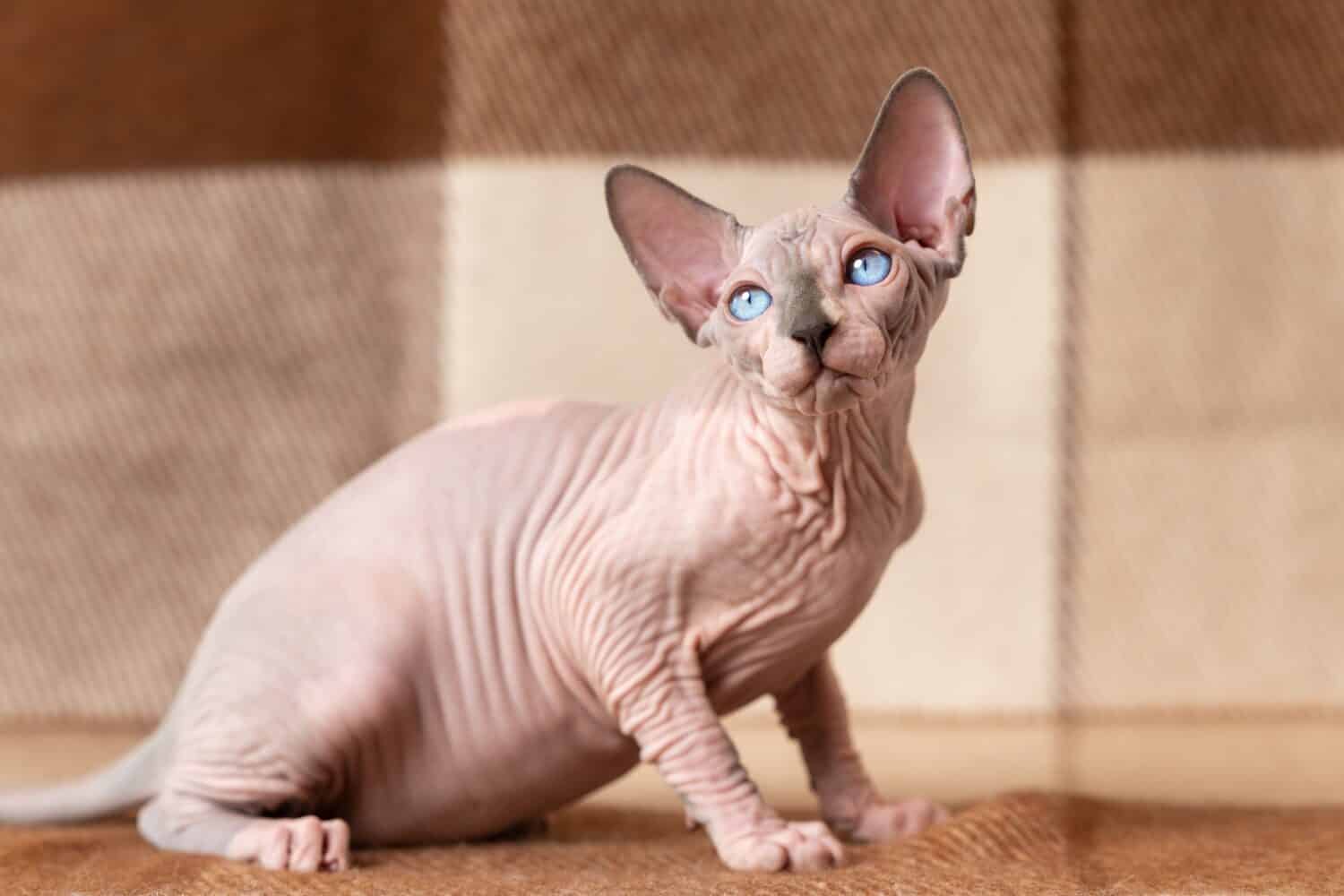
Known for their hairless bodies, Sphynx cats have outgoing personalities.
©Alexander Piragis/Shutterstock.com
Sphynx cats are known for their hairless or partially hairless bodies. They have soft wrinkly skin and can have a variety of darker patterns. They have triangular-shaped heads and large oval-shaped eyes. Their ears are quite large relative to their heads, and their tails may have a patch of fur on the very tip. Sphynx cats are very extroverted and very intelligent. They are affectionate towards their owners and are even friendly towards strangers because of their dog-like nature.
Due to their lack of fur, Sphynx cats can get very cold, as it is harder for them to regulate their body temperatures. Similarly, the lack of fur makes them prone to cancer-causing sunburn. Sphynx cats have a high rate of heart disease, with the males faring worse than females as they get older. You can expect a sphynx cat to live between 9 and 15 years old.
7. Ragdoll — 9 to 15 years

The piercing blue eyes of the ragdoll make it a popular cat breed.
©Peredniankina/Shutterstock.com
Ragdolls are a large cat breed with a distinct and desirable colorpoint coat complimented with stunning blue eyes. Their fur is thick, long, and very soft and usually comes in tricolor and bicolor. These cats can grow to between 10 and 20 pounds. Ragdolls have gentle and docile personalities and get their name from their trait of going limp when picked up, like a ragdoll.
There are no breed-specific health conditions related to ragdolls, but they are still susceptible to common cat issues. These issues can include heart conditions, kidney disease, bladder stones, and obesity. However, most of these problems are a result of poor diet, lack of access to fresh water, and lack of regular exercise. With proper care and regular vet checkups, Ragdolls can reach between 9 and 15 years of age.
8. Devon Rex — 9 to 15 years
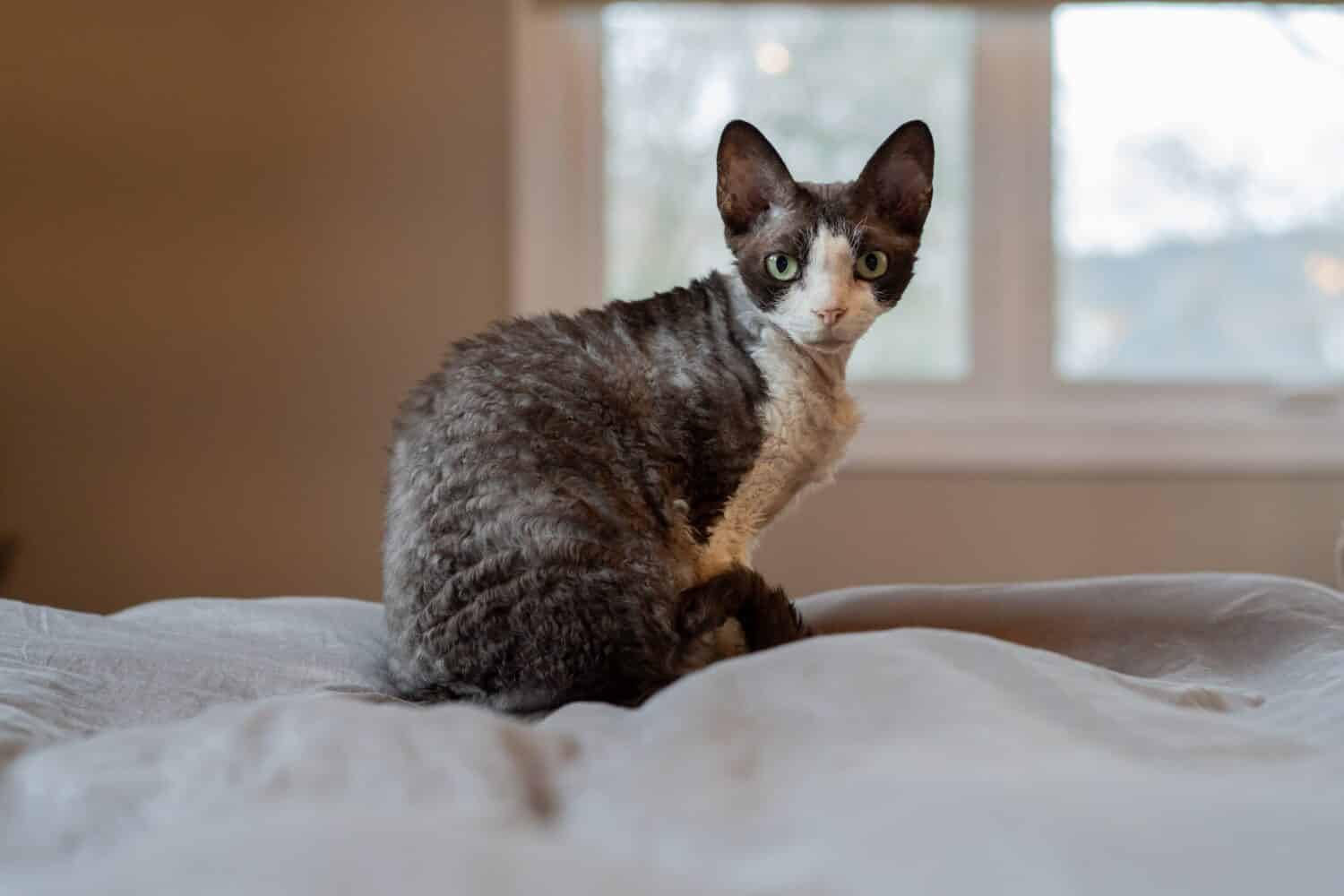
Boasting short, curly hair, the Devon Rex comes in many patterns.
©Heather Raithby Doyle/Shutterstock.com
The Devon Rex is a unique-looking cat. They have short, curly hair, which is very soft and velvety, and long, athletic legs. Their ears are also large relative to their head size, and they come in color patterns ranging from solid, tortoiseshell, and tabby. Further adding to their uniqueness, the Devon Rex has unusually short and, oftentimes, curly whiskers. Because of their fur type, the Devon Rex is often thought to be hypoallergenic, and while they do have a low shedding coat, this is not technically true.
This breed has a common health problem called hereditary myopathy, which affects their muscles. It is common for a Devon Rex to die from laryngospasm while eating, causing them to suffocate on their food. You can expect this cat to have a lifespan of between 9 and 15 years old.
9. Singapura — 11 to 15 years
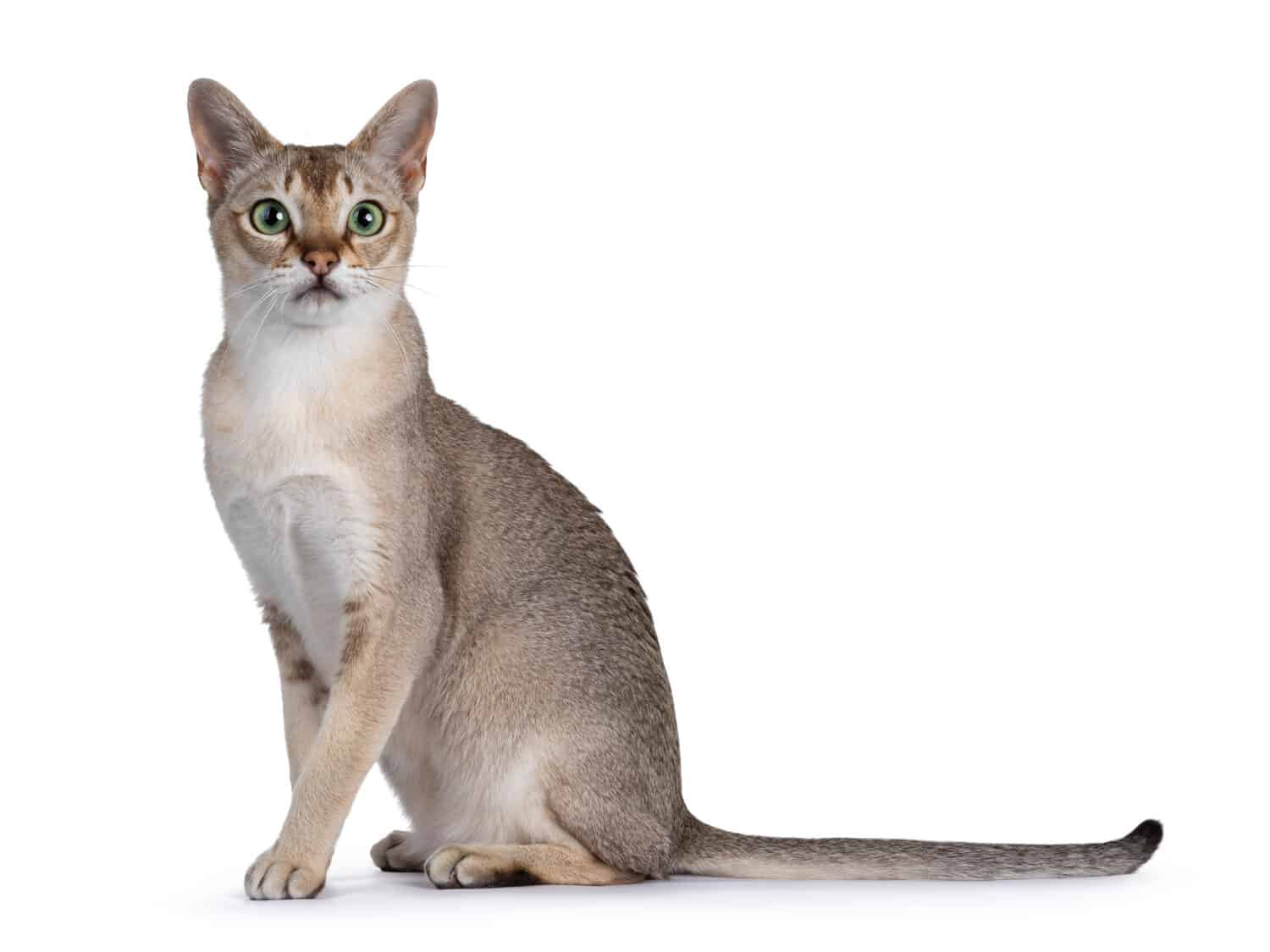
A tiny cat, the Singapura is generally a healthy breed.
©Nynke van Holten/Shutterstock.com
The Singapura is the smallest cat breed. These adorable cats have large eyes and ears, muscular bodies, and tails with blunt tips. Singapuras are tiny, weighing only around 4 to 6 pounds! The coat pattern is ticked tabby, and its coat is short and fine. The Singapura is lively and active and acts like a kitten into adulthood.
The Singapura’s average lifespan is between 11 and 15 years. The breed is quite healthy and has very few genetic health issues. One major condition that the Singapura is susceptible to is uterine inertia, an issue with the delivery of kittens. Because of this, some cats will need a Caesarean to give birth to a litter.
10. Chartreux — 11 to 15 years
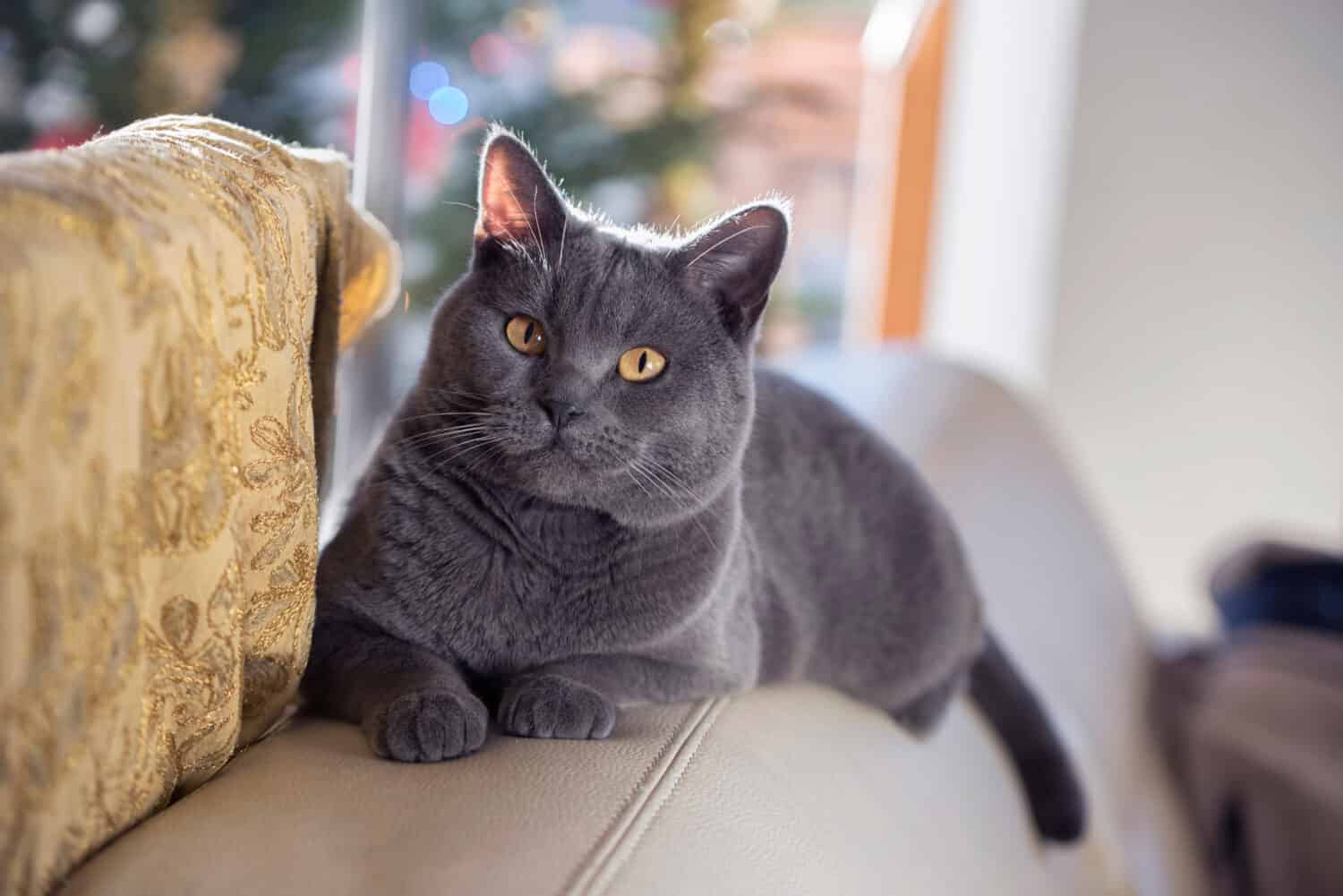
Although still vulnerable to common cat health issues, Chartreux cats don’t have any breed-specific health conditions.
©Katniss studio/Shutterstock.com
Chartreux are medium-sized cats with dense and wooly fur, which can make them appear larger. This fur is water resistant and comes in colors such as ash or slate; older cats can have silver tipping. Their eyes are copper or gold in color and provide a stunning contrast to their fur. Chartreux are a quiet breed and will not make many noises, such as meowing or chirping, and have a very calm and sweet nature.
Thankfully, these cats do not have any breed-specific health conditions to worry about. However, they are still vulnerable to common cat health issues such as obesity, kidney, and dental issues. Regardless of this, the lifespan of the Chartreux is still relatively short compared to other cats. You can expect your Chartreux to live between 11 to 15 years.
11. Abyssinian — 13 to 15 years
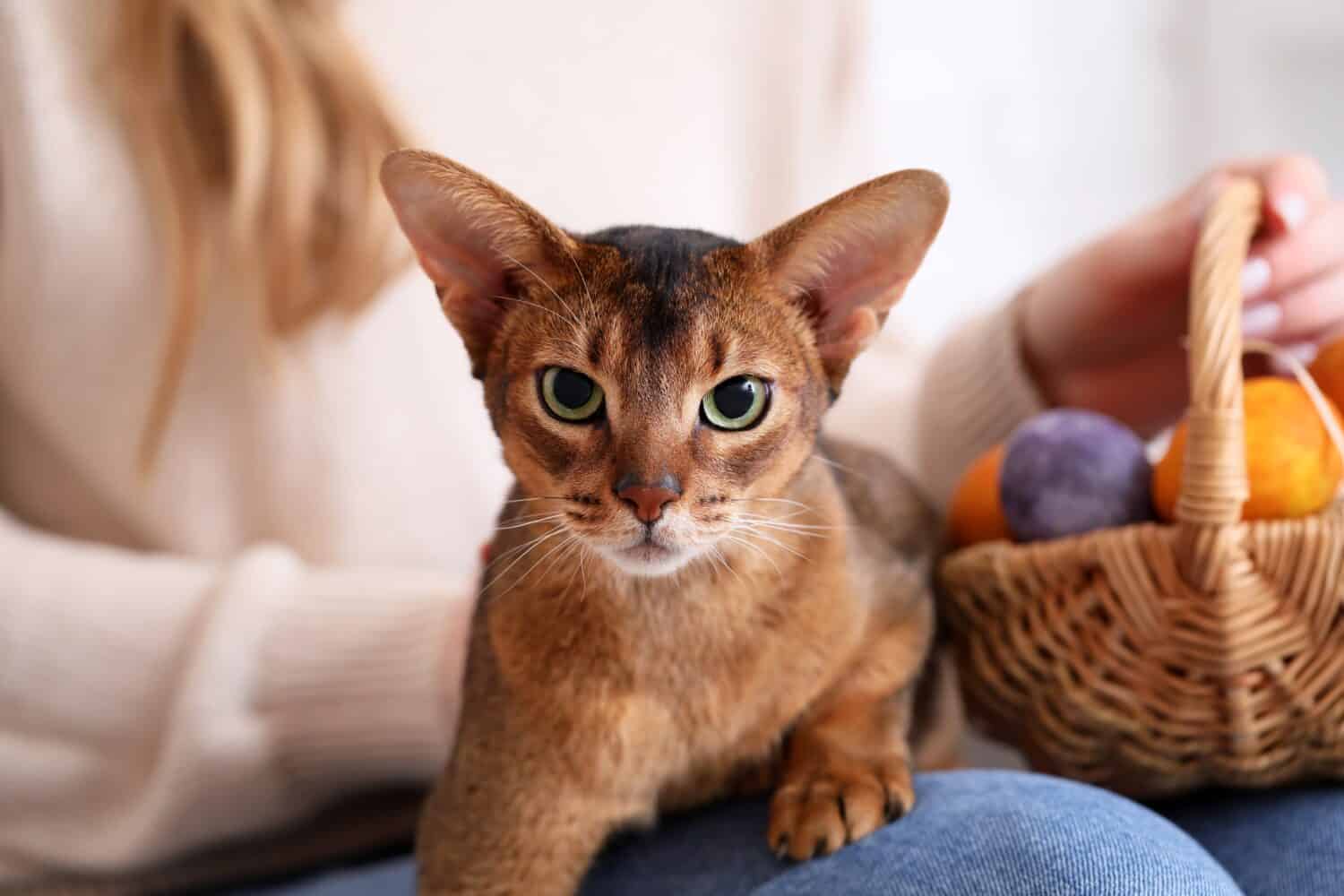
On average, the
Abyssinian
has a lifespan of 13 to 15 years.
©Pixel-Shot/Shutterstock.com
Abyssinian is a small to medium-sized cat breed. They are long, lean, and muscular with long, thin legs. Their eyes are almond-shaped, and they have oversized pointed ears. The eye color depends on their coat color and can be gold, green, hazel, or copper. The most common coat color is ruddy, but other colors include sorrel, blue, or fawn.
The lifespan of the Abyssinian cat is 13 to 15 years. Some health issues that the Abyssinian is prone to include chronic renal failure, hyperthyroidism, luxating patella, progressive retinal atrophy, and pyruvate kinase deficiency.
12. Tonkinese — 12 to 16 years

Living between 12 and 16 years, the Tonkinese is considered a healthy breed.
©dezy/Shutterstock.com
The Tonkinese is a very popular cat breed produced by crossing a Siamese and Burmese. They are medium-sized cats with slender and long bodies. They are deceptively muscular and are heavier than expected when picked up, weighing between 6 and 12 pounds. The Tonkinese comes in many colors – natural, champagne, blue, and platinum – officially recognized by Cat Fanciers’ Association. The coat pattern can be point, solid, or mink.
The lifespan of this cat is between 12 and 16 years. Although generally a healthy breed, the Tonkinese can have certain ailments, especially later in life. These health conditions include hyperthyroidism, mouth and gum disease, feline asthma, heart disease, and cystitis.
13. Manx — 14 to 16 years

Interestingly, the Manx features no tail or only a small stump.
©PradaBrown/Shutterstock.com
The Manx is great at catching mice, so farmers love this breed. Manx are rounded cats – they have round heads, round eyes, round whisker pads, and a round rump. Their unique feature is, of course, their tails. Although some are completely tailless, others do have a small stump of a tail. The hair of the Manx is short, thick, and dense. However, some Manx can also have long hair. The most common coat colors include tabby, tortoiseshell, calico, and solid colors.
The life expectancy of the Manx is 14 to 16 years. Because of their very short or absent tail, this breed may have health issues known as Manx syndrome. They are predisposed to abnormal development of the spinal nerves and spinal cord, which can cause symptoms that can be life-threatening. The signs include constipation, urinary incontinence, fecal incontinence, rectal prolapse, urinary tract infections, partial paralysis of hind legs, abnormal gait, arthritis, and megacolon.
14. Persian — 10 to 17 years
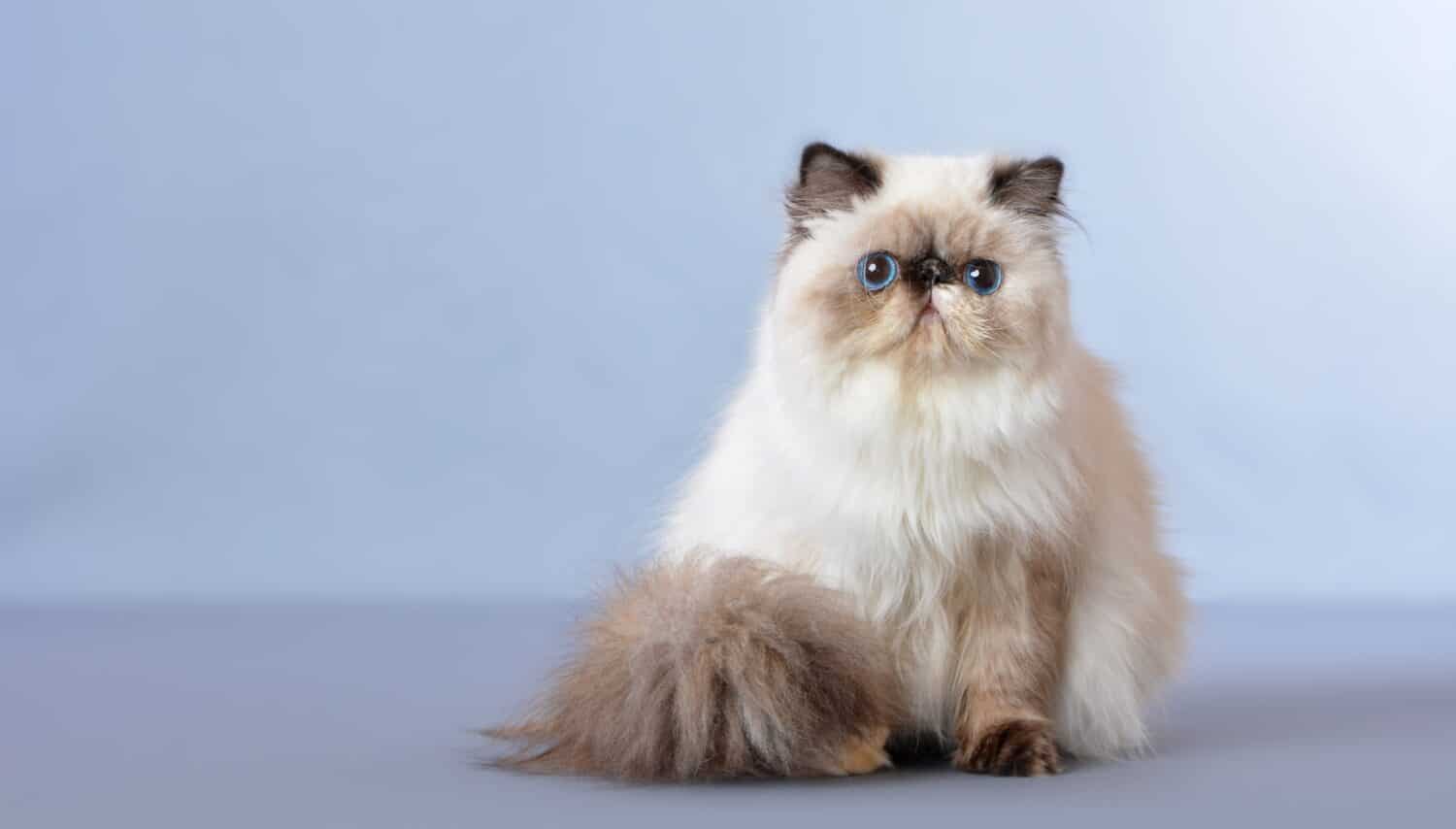
Although their squished faces may be adorable, Persian cats are susceptible to health issues.
©Cicafotos/Shutterstock.com
The Persian cat is easily recognized by their round, brachycephalic face. They are a long-haired cat breed with short legs and ears that are set far apart. Their ears are small, and their eyes are big. The color and marking of the Persian can vary widely. Although Persians are affectionate, they do not demand constant attention. These cats also tend to be quite reserved around strangers.
The lifespan of the Persian is between 10 and 17 years. However, the average lifespan is only around 13.5 years. Despite their cuteness, the Persian is more susceptible to health issues and diseases than most other breeds. Health issues can include dental diseases, eye infections, coat disorders, kidney diseases, and cancer.
15. American Wirehair — 14 to 18 years
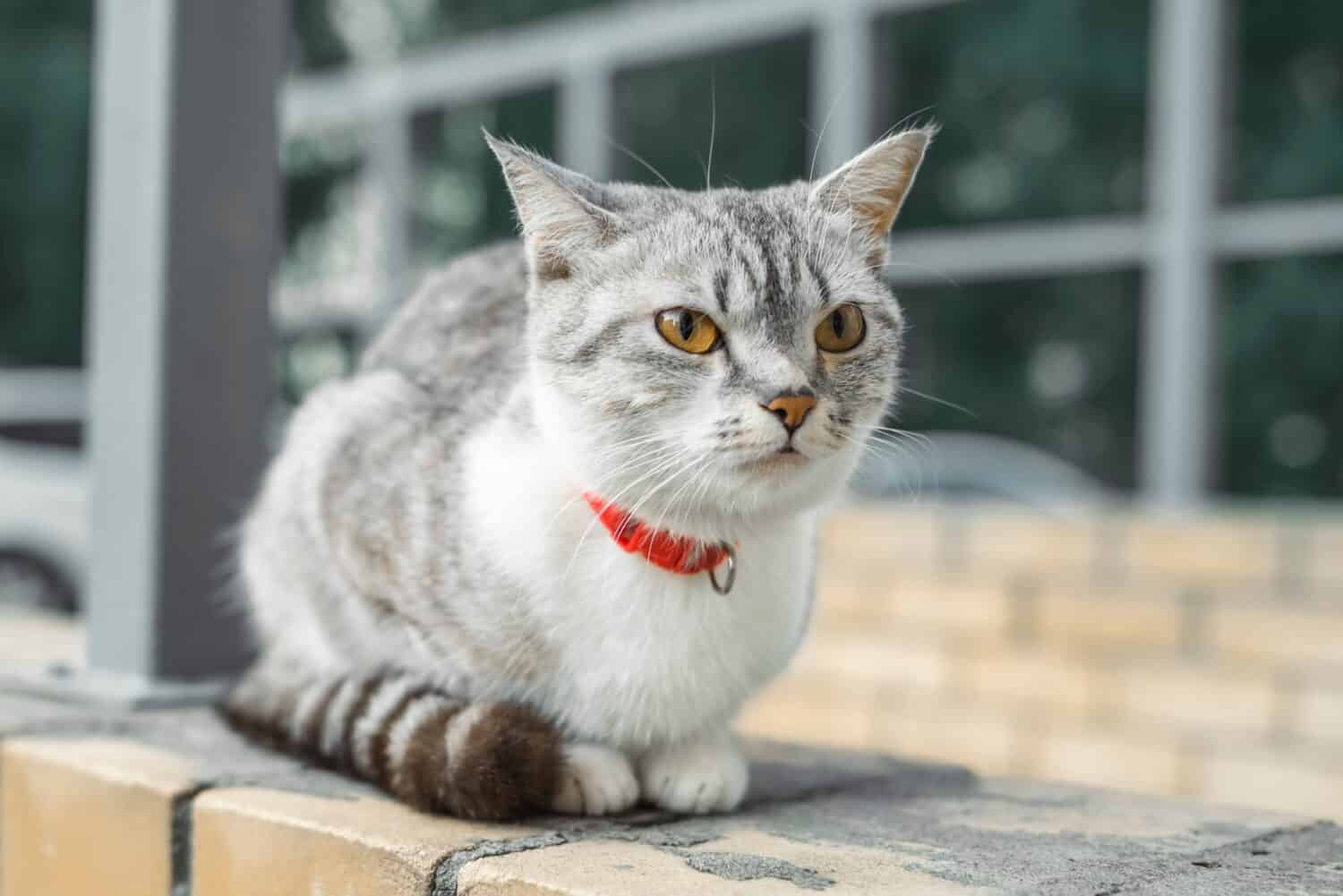
Coming in a range of different colors, the American wirehair has coarse, crimped fur.
©Azovsky/Shutterstock.com
The American wirehair can be easily distinguished from other cat breeds by its coarse, crimped fur. The fur has often been compared to steel wool. The whiskers are also crimped or curly. The American wirehair is a medium to large-sized cat with a muscular body. The coat comes in a range of different colors, including blue, black, red, cream, chinchilla silver, red-shaded, and blue smoke. The coat also comes in various patterns, including spotted tabby, classic tabby, mackerel tabby, ticked tabby, and bicolor.
Health issues of the American wirehair include obesity and heart disease. As these cats are prone to obesity, they must be kept on a strict diet and given high-quality food. Obesity can lead to other health problems, including diabetes and arthritis, so you must ensure your kitty does not become obese. The average lifespan of the American wirehair is 14 to 18 years.
16. Burmese — 9 to 19 years

Although generally healthy, Burmese cats are predisposed to certain health issues.
©Liliya Kulianionak/Shutterstock.com
Burmese are medium-sized cats with round eyes, a round chin, round tips of the ears, and even round feet! The coat is short and glossy and is traditionally deep brown or sable in color. Other colors of the Burmese include champagne, platinum, and blue. These cats form strong bonds with their owners and need human contact to be happy. The Burmese are intelligent and curious and can even learn tricks and play fetch.
The lifespan of the Burmese is between 9 and 19 years. Although they are generally healthy, the Burmese do have several health issues that they are predisposed to. These health conditions include diabetes, arthritis, eye problems, heart diseases, and facial defects.
17. Cornish Rex — 11 to 20 years
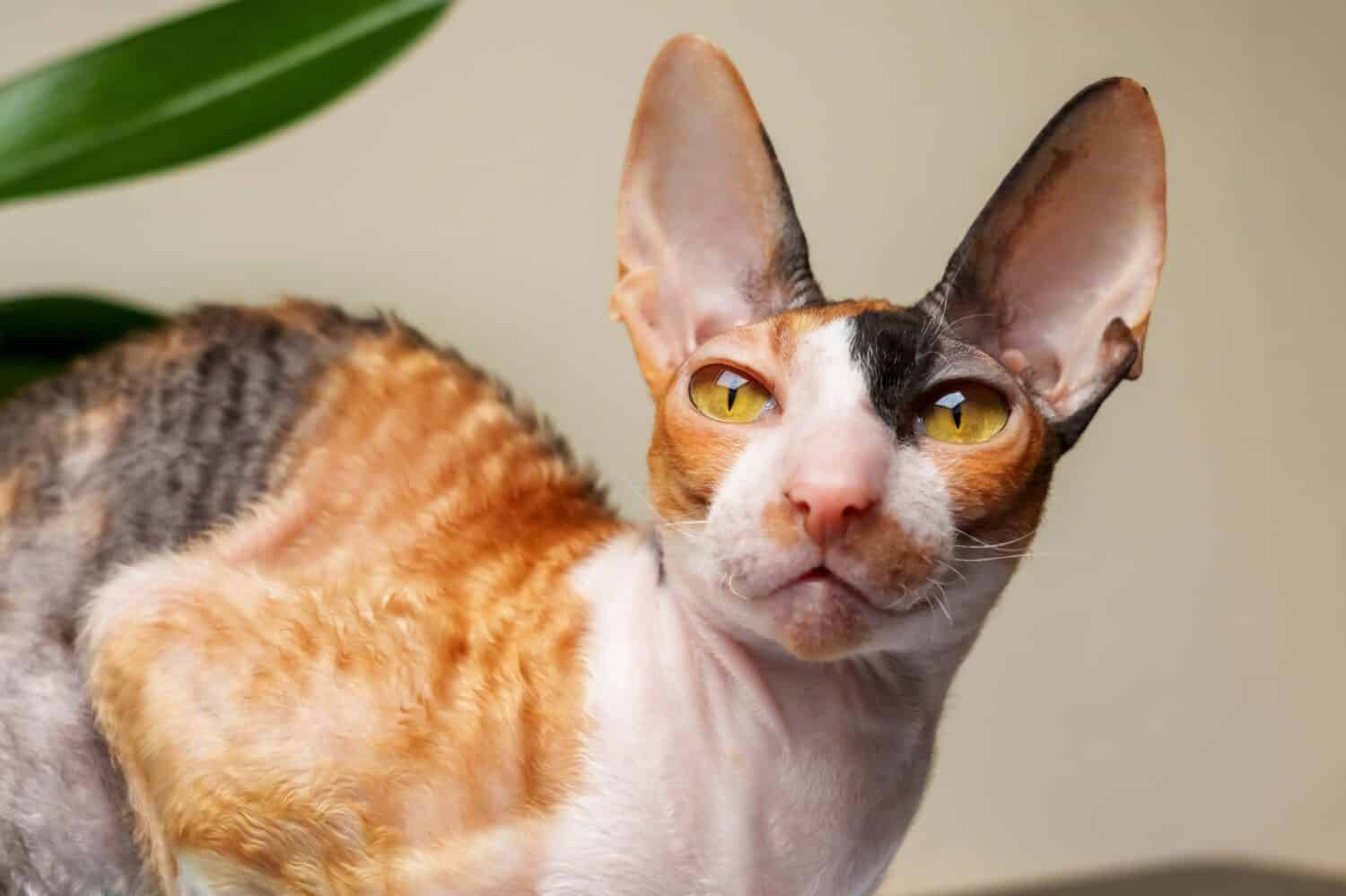
Known as the
greyhound
of cats, Cornish Rexes are intelligent and have muscular bodies.
©Pavel105/Shutterstock.com
The Cornish Rex has a genetic mutation that causes the breed to have no fur. Instead, they only have down hair that is very fine and wavy. This breed is known to be the Greyhound of cats due to their athletic bodies and intelligent personalities. The Cornish Rex is a slender, medium-sized breed that weighs between 5 and 10 pounds. This breed also has an extremely long tail. These cats have large ears, oval eyes, wide hips, and muscular bodies. The Cornish Rex’s coat comes in diverse colors and patterns.
The lifespan of the Cornish Rex is anywhere between 11 and 20 years. However, the average is generally between 12 and 15 years. The Cornish Rex is considered a hardy cat with only a few known health issues. Common health issues for this breed include hypertrophic cardiomyopathy, patellar luxation, and sunburns.
18. Siamese — 15 to 20 years
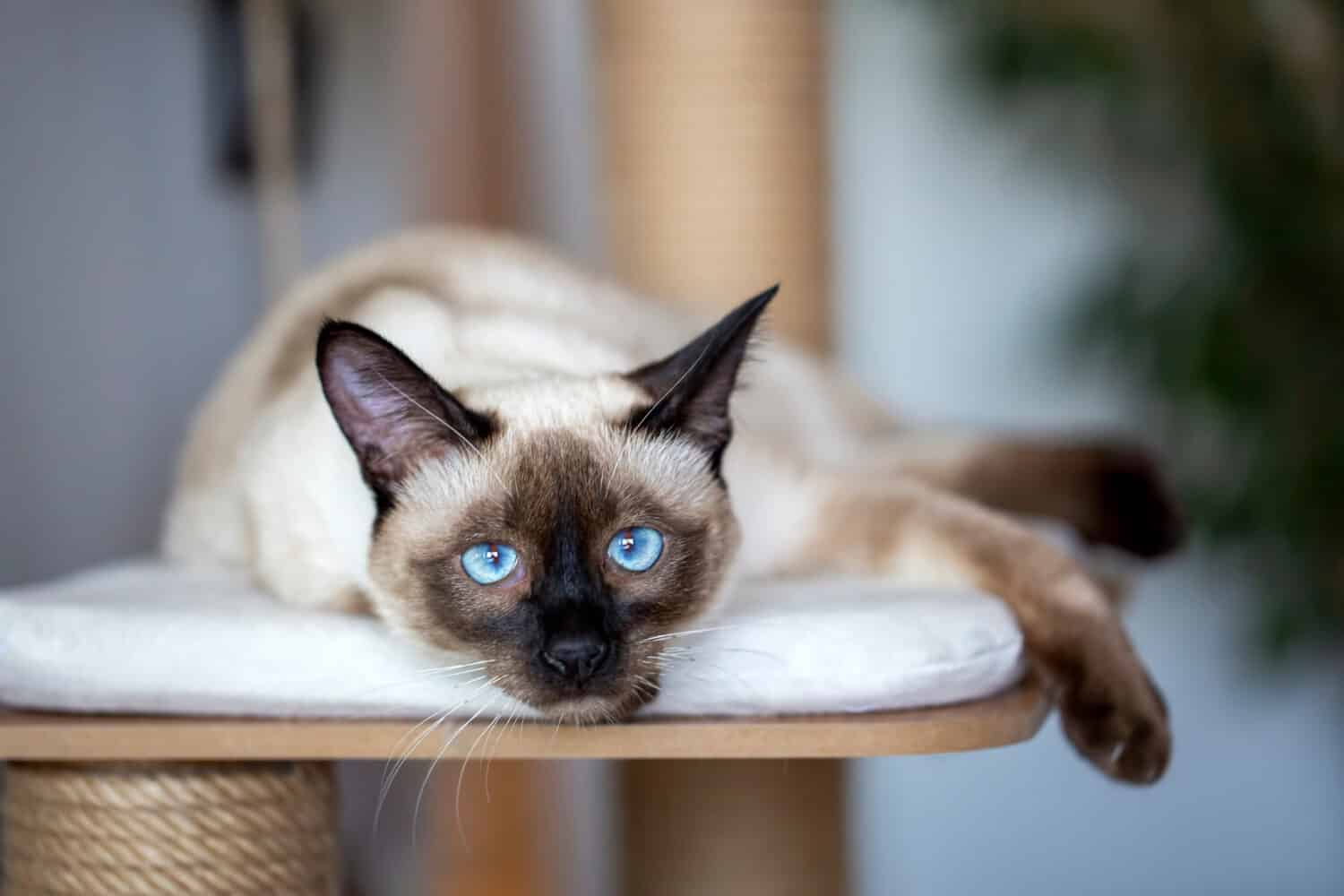
If well taken care of, a Siamese cat can live up to 20 years.
©Esin Deniz/Shutterstock.com
Siamese cats are sought after for their striking appearance. They have light-colored bodies with darker faces, ears, and tails. Their coat is short and soft, and they have deep blue eyes. These cats are loved for their social nature. They are loving and affectionate towards their owners and can be very chatty. They enjoy playing with toys and will even partake in games of fetch.
Siamese cats are more prone to lung infections than other breeds. They also have reduced night-time vision, so they are more likely to get into dangerous situations when it is dark. When provided with a safe environment and healthy living conditions, Siamese cats can live between 15 to 20 years. The oldest living cat was a Siamese, who lived to reach 30 years of age!
19. Oriental — 15 to 20 years
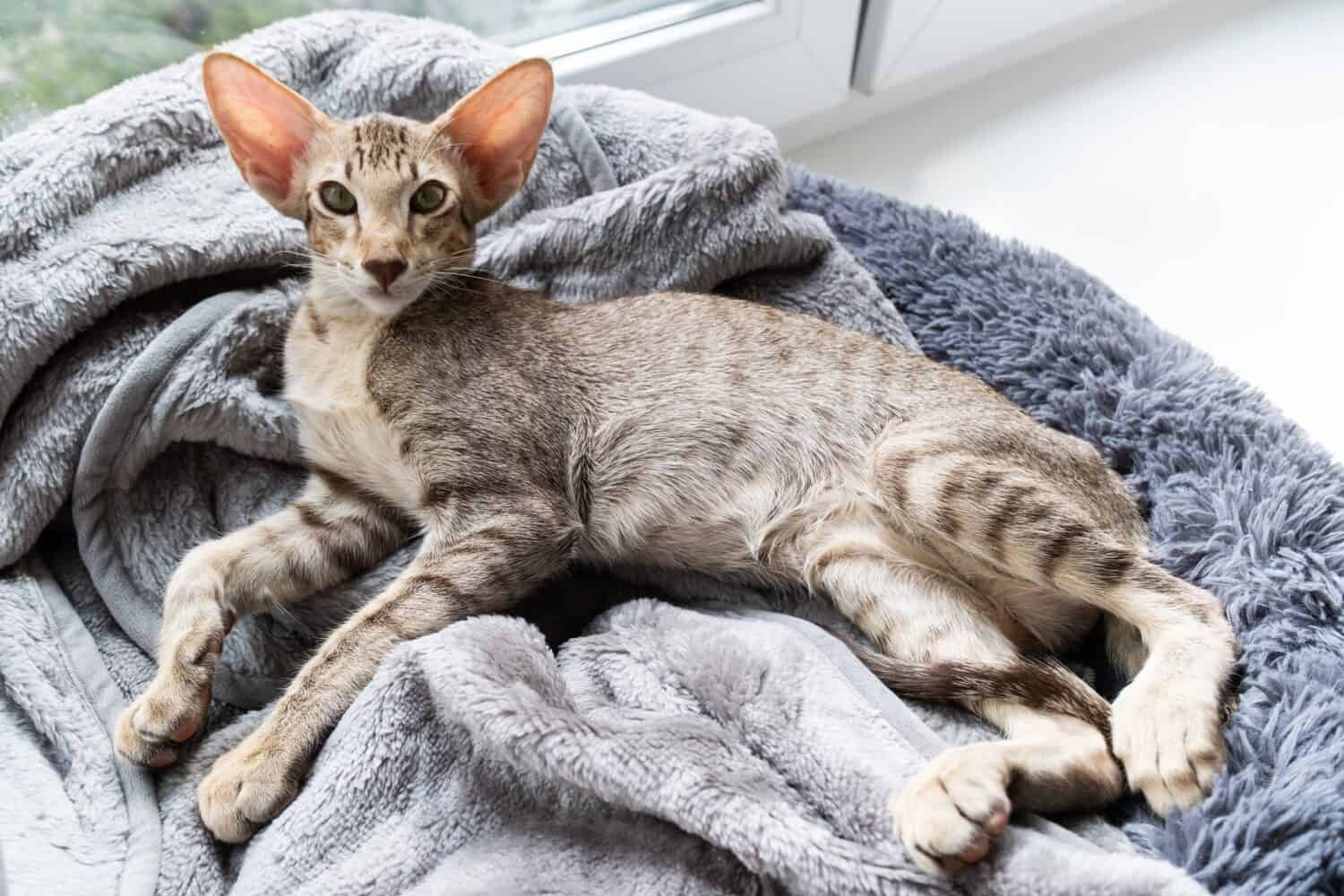
With a triangular head, the oriental cat has a very unique look.
©VittoriaChe/Shutterstock.com
The oriental is another extreme-looking cat breed that has a long head, tall ears, and long legs. The cat’s head is triangular in shape, as it also has a long, straight nose. The eyes are almond-shaped and are usually bright green. The coat comes in a variety of colors, including white, blue, cream, red, lavender, champagne, and seal. Patterns include solid, tortoiseshell, bicolor, calico, tabby, ticking, smoke, shaded, and points.
The lifespan of the oriental is between 15 and 20 years. This breed is relatively healthy and does not have health issues that are specific to this breed. However, some health issues to be aware of are progressive retinal atrophy and flat-chested kitten syndrome.
20. Russian Blue — 15 to 20 years
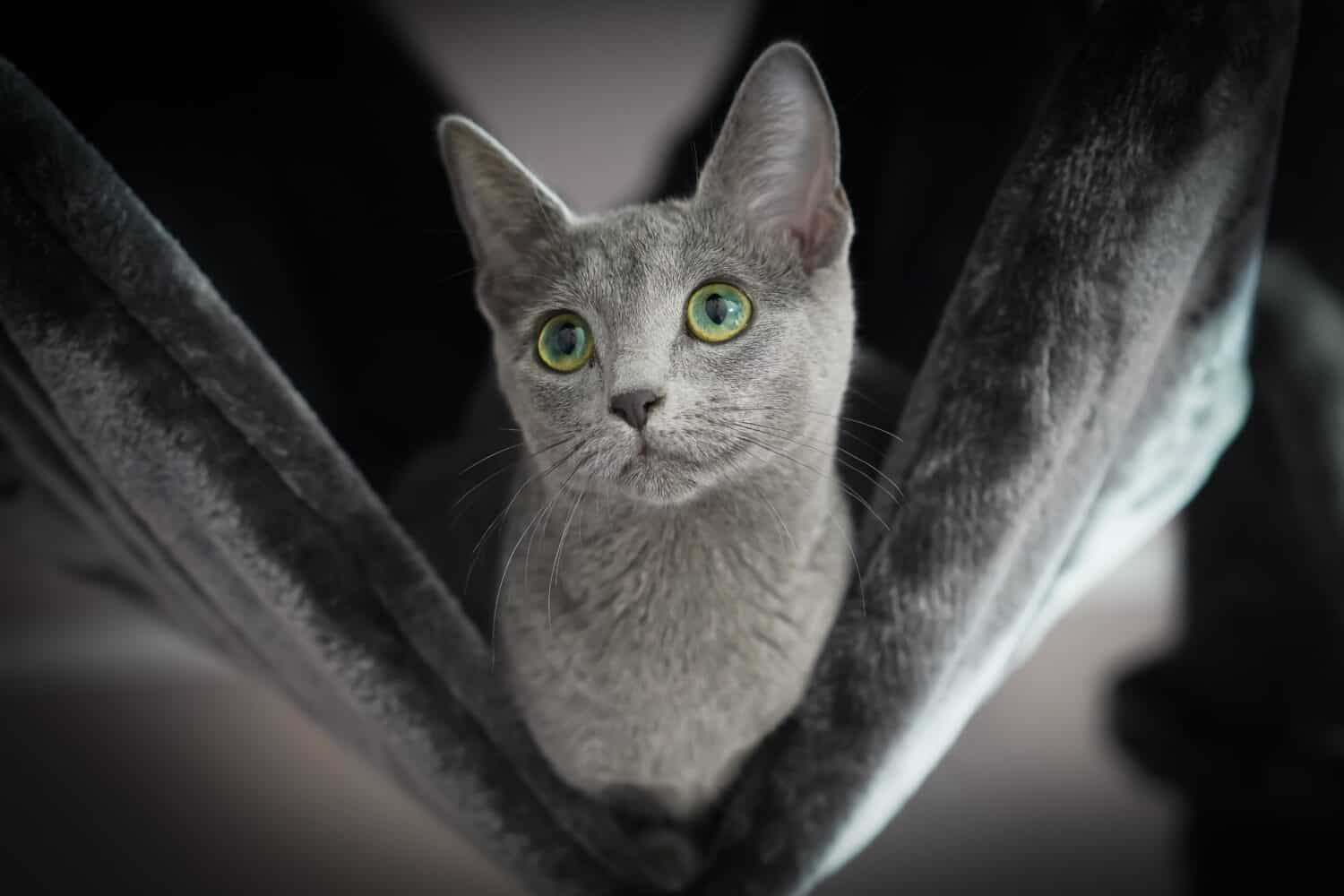
As their name suggests, Russian blues have blue-gray fur.
©Michael Kalinin/Shutterstock.com
Russian blues have medium-sized bodies and a double coat of thick, short fur. They are blueish-gray in color, as evidenced by their name. They have beautiful green eyes, and some Russian blues have stripes on their tails. This breed is energetic and requires a lot of stimulation through playing or exploring. They get along well with other animals in the family and are comfortable with small children.
Russian blues have very few health-related problems, and none specific to the breed. However, they are still prone to normal health problems like dental issues, kidney disease, and urinary tract infections. Russian blues will typically live between 15 and 20 years old.
Summary of Cats with the Shortest Lifespan
| Rank | Cat | Lifespan |
|---|---|---|
| 1. | Exotic Shorthair | 8-11 years |
| 2. | Burmilla | 7-12 years |
| 3. | Maine Coon | 9-13 years |
| 4. | Scottish Fold | 12-14 years |
| 5. | Himalayan | 9-15 years |
| 6. | Sphynx | 9-15 years |
| 7. | Ragdoll | 9-15 years |
| 8. | Devon Rex | 9-15 years |
| 9. | Singapura | 11-15 years |
| 10. | Chartreux | 11-15 years |
| 11. | Abyssinian | 13-15 years |
| 12. | Tonkinese | 12-16 years |
| 13. | Manx | 14-16 years |
| 14. | Persian | 10-17 years |
| 15. | American Wirehair | 14-18 years |
| 16. | Burmese | 9-19 years |
| 17. | Cornish Rex | 11-20 years |
| 18. | Siamese | 15-20 years |
| 19. | Oriental | 15-20 years |
| 20. | Russian Blue | 15-20 years |
The photo featured at the top of this post is © Alexander Piragis/Shutterstock.com
Thank you for reading! Have some feedback for us? Contact the AZ Animals editorial team.






